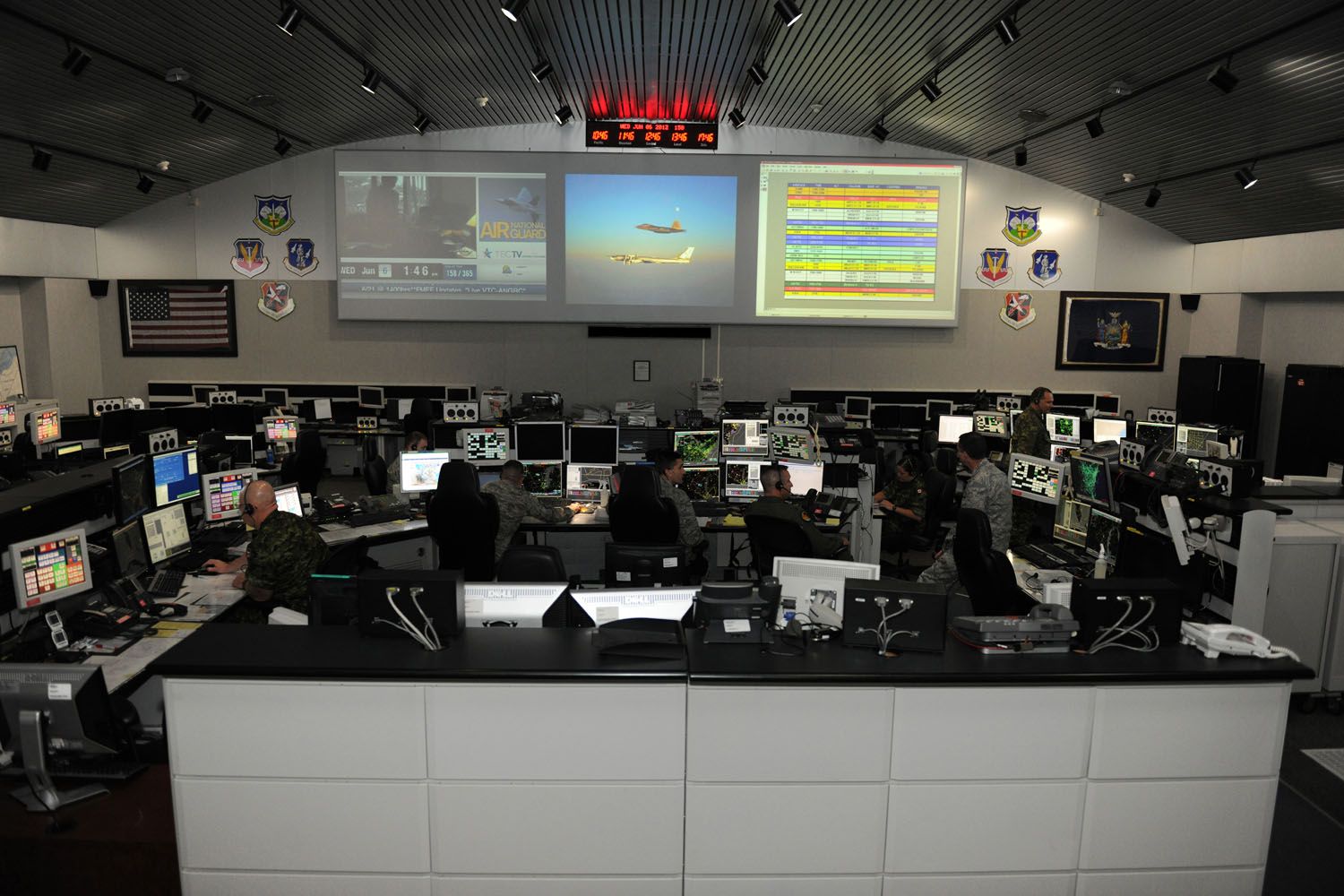A program office at Hanscom Air Force Base is working to improve and upgrade a system that provides comprehensive air surveillance and defense with a recent request for information and industry days.
The Battle Control Systems Fixed, or BCS-F, provides a comprehensive air picture for North America and allows air battle managers to execute command and control missions. Officials are looking for options to modify the system, including processing of new data sets, such as the Automatic Dependent Surveillance Broadcast, ADS-B.
“With the current BCS, we get multiple feeds to create the air picture, and when we integrate ADS-B, we’ll get information from the (Federal Aviation Administration) that would improve accuracy – and details about an aircraft,” said 1st Lt. Dylan Byrd, a launch deputy project manager. “For instance, if we saw a stuck track, we’d have the ability to pull up the emitter category of the aircraft to see if it’s a helicopter instead of tasking resources to get a visual confirmation.”
ADS-B is part of the Next Generation Air Transportation System, or NextGen, and program office personnel will continually be looking at NextGen capabilities. NextGen is a massive initiative between federal partners to modernize America’s air transportation system, and according to documentation developed by the FAA, it involves a shift to satellite-based and digital technology.
Additional work includes updating capabilities such as tactical display framework, and functions such as alerts and track history.
“We want to ensure we keep the functions the system has today, but we want to see if we can improve and update them alongside the new abilities ADS-B can bring in, especially if we can get the information seven to 12 times faster,” Byrd said.
Another system capability the program office is looking to enhance is updating what is called the Correlator Tracker’s Earth Model to a more accurate model, known as Earth Centered Earth Fixed.
“Currently, BCS takes multiple sources of data in and assigns them different values, including calculating position and displaying on the screen for the operator,” Byrd said. “However, BCS thinks the world is a rectangle with fixed boundaries and we are trying to eliminate those boundaries. With air defense, the further out you can go and the further out you can look, understand, see and pull data in, the faster you can react and the faster you can provide an updated air picture.”
The program office held industry days at the beginning of August to determine industry interest and capability. Fifteen companies attended, demonstrating significant industry interest.
“We’re looking to industry to see if there is something in existence that brings in the new sensor information that is also able to accommodate what BCS already does today,” Byrd said. “We’re also looking to see if anyone can bring an open architecture.”
Once the program office has finished market research, they are planning to look toward release of a request for proposal toward the end of fiscal year 2017.
As the BCS-F is a North American Aerospace Defense Command, or NORAD, system, the program office at Hanscom AFB is working a project arrangement with Canada.
“We’re working with them to share the cost of development and bringing in their resources, such as engineers, right from the start,” said Capt. Jeremi Viloria, a launch project manager. “ADS-B is their number-one requirement as it will improve their reach, allowing them to get surveillance in areas they weren’t able to before.”
And while all this work is going on, the program office is continuing efforts to sustain and maintain the current BCS-F with a contractor logistics support contract. This effort will bring in new functionality such as Mode 5, providing better information for the operators.
“This enhancement reduces ID track swaps, extends effective coverage and reduces target dropouts, which benefit our operators and provide some of the highest quality data available for the assets that matter most in a command and control environment,” Byrd said.
He added the program office is looking to open up the system bit by bit to enable greater competition.
“The program office is pursuing its first full and open competition of contractor logistics support for the BCS-F fielded system,” Byrd said. “We believe this competition will leverage industry strengths and also gives an opportunity for new contractors to provide the government with alternative methods to sustain this high-demand, critically important system at its 99.98 percent operational availability rate.”










